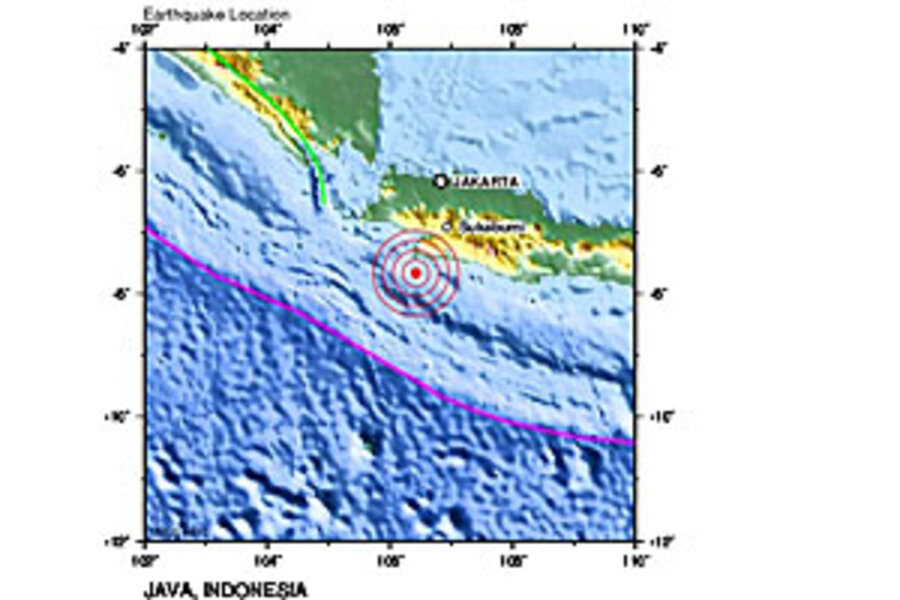Indonesia rattled by 5.9 earthquake, but no tsunami
Loading...
| Jakarta, Indonesia
A strong earthquake off Indonesia's coast caused tall buildings to sway in the capital Monday afternoon, but officials said there was no threat of a tsunami.
Office workers said the swaying was felt for about 10 seconds in high-rise buildings around the city of 9 million people. Even two-story residential homes shook strongly.
No damage or casualties were immediately reported.
The U.S. Geological Survey said the 5.9-magnitude quake hit 100 kilometers (62 miles) southwest of Sukabumi, a town in West Java province. It was about 171 kilometers (106 miles) from Jakarta and 67 kilometers (41 miles) beneath the floor of the Indian Ocean.
Indonesia's Meteorology and Geophysics Agency had the preliminary magnitude at 6.1. Slight discrepancies are common in the initial measurements.
Indonesia has frequent earthquakes due to its location on the Pacific "Ring of Fire," an arc of volcanos and fault lines encircling the Pacific Basin, but it is uncommon for tremors to be felt in Jakarta.
RECOMMENDED: Surviving Japan's earthquake and tsunami
Copyright 2012 The Associated Press.







